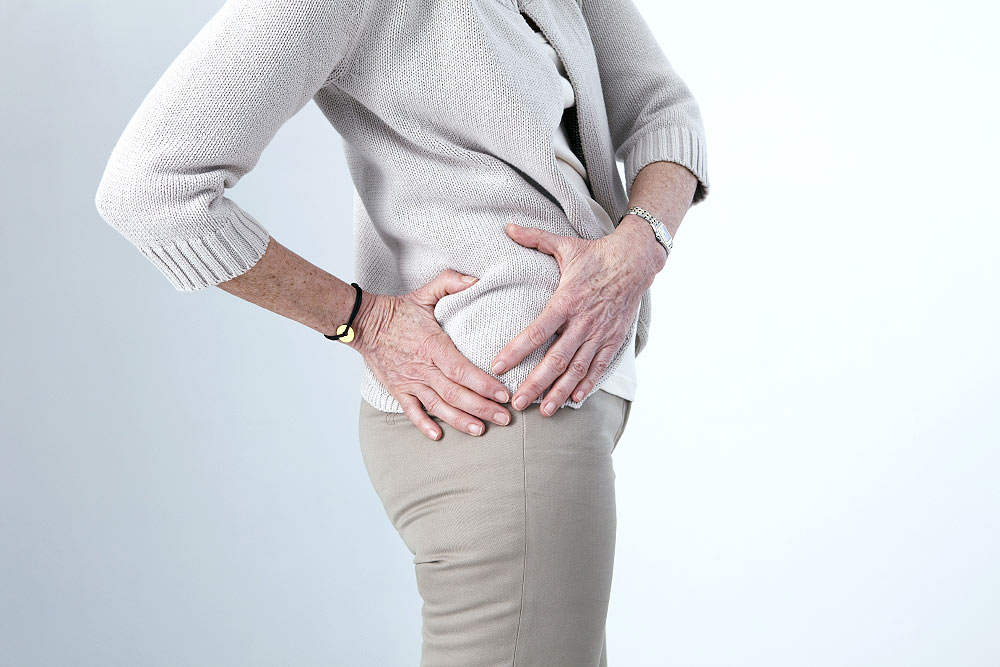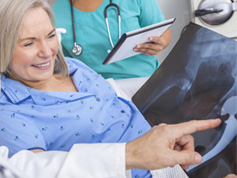
When it comes to niggling hip pain, arthritis is a common culprit. And not just for those of us in our 60s, 70s and 80s. I find that an increasing number of our patients are in their 40s, or even younger. First things first, though. What exactly is arthritis? There are two types. Rheumatoid arthritis is an autoimmune disease that causes inflammation around the body. But for this blog we’ll focus on the other, more common type: that’s osteoarthritis, which is where the breakdown of protective cartilage in our joints eventually causes the bones to rub against each other. The symptoms of osteoarthritis typically develop gradually, over time. Think of them as early warning signs. Here are some of the classic ones…
Pain in the groin or upper thigh
Pain is often the first way that people discover their arthritis. A common pattern goes something like this: you were doing some exercise – gardening, perhaps – and you suddenly felt a sharp pain in your groin or thigh, or a dull ache afterwards. You assumed you’d just pulled a muscle, and it got better over the following week or two. But then… it came back again. This is often how arthritis starts: with a variable pain that comes and goes but gradually becomes more established.
Stiffness
Joint stiffness is another common symptom of arthritis. The key questions to ask are: when does it tend to occur, and how long does it last? Stiffness that typically happens in the morning and lasts for an hour or more tends to indicate inflammatory arthritis. Stiffness after exercise, however, suggests osteoarthritis. That’s because the joint surfaces are starting to break up and, as they become rougher, it takes greater force to move them. Stiffness can also lead to…
Loss of movement
When our hips start to deteriorate, everyday activities become harder to manage. So this is another red flag for osteoarthritis. Some typical examples: you’re finding it difficult to put your shoes and socks on easily; cutting toenails has become a chore; you’re struggling to climb stairs in the way you used to; perhaps you’ve found yourself lagging behind when you go out for walks with friends.
Swelling
The hip joint sits deep inside the body, so we don’t often see swelling, unlike in the knee. Inflammation in the joint lining (synovium) causes it to thicken, and the volume of fluid in the joints (the synovial fluid) increases. You’re more likely to experience it as pain or stiffness in the early stages. This also explains why osteoarthritis doesn’t always get seen in x-rays. X-rays pick up bone damage, but not swelling in the soft tissues. Just because the x-ray looks normal doesn’t mean that arthritis isn’t present.
Crunching and locking
These warning signs are more commonly seen in joints like the knees and shoulders, but it can happen to hips too. Bone grinding against bone sometimes produces an audible sound, like a crunching or popping noise. This is known as crepitus. Locking, on the other hand, is what happens when little particles of cartilage break away from the joint surface and lodge in the joint itself. When this happens, the bones catch or jam on the debris until it clears. It can occur quite suddenly, as you’re walking along.
If you’re concerned about osteoarthritis in your hips, or if you’ve developed some of these signs, the good news is that you don’t need to suffer in silence! We’re always happy to investigate the symptoms, and to help you think through the options. You can click here to make an appointment.

